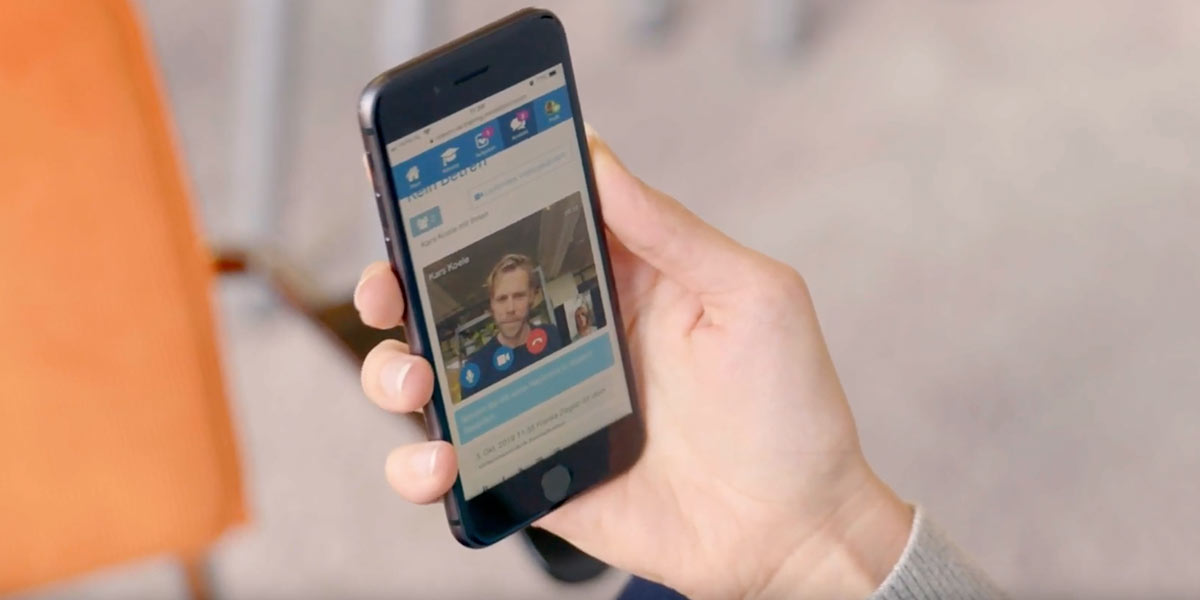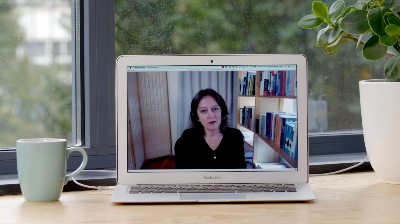With some measures still in place to help reduce face-to-face contact during the pandemic, therapists and psychiatrists are continuing to use online possibilities to offer their treatment. Marley Heilbron works as a clinical psychologist for Dutch clients from across the Atlantic Ocean - in this blog, she explains how she manages this.

For the last six years, Heilbron has been working from Boston, Massachusetts, after her husband suggested they to move to the United States for work. She started her own private practice and works from abroad for a mental health organisation. "I mostly work with expats from all over the world, and I enjoy it very much. Due to the time differences, it can sometimes be a bit of a puzzle - but we try to make it work for everyone as well as possible."
Heilbron offers treatment completely digitally; a combination of video calls, online modules and diaries. She works with patients often suffering from depression or borderline personality disorder. Starting with offering digital treatment was exciting for her, and she thinks the benefits are enormous. "I put on my noise cancelling headphones and I’m in my cocoon. There are less distractions than in a treatment room or practice. The only downside is that the eye-to-eye contact is less natural. That takes some time to adjust to."
"I put on my headphones, and I’m in my cocoon."
People in a video call often see their own face on screen as well - this can be something that patients need to get adjusted to, says Heilbron. "For example, they start noticing and touching their hair, but that fixation quickly disappears. And I even talk to patients who sit in their pyjamas - and that’s fine too. When people are tense, it’s a benefit when they can be comfortable at home, and have their dog or cat on their lap. That can definitely help."
Cards on the table
Because of the comfort of receiving treatment at home, Heilbron also has the idea that patients are more likely to lay their cards on the table more easily. "For cases of trauma, it can be very helpful that people don’t have to go outside for their treatment. I think therapists often underestimate this." A video call also gives a therapist the opportunity to see where somebody lives. "Sometimes it feels like you’re closer to someone via a video call than in a treatment room at the practice."
 Heilbron treats patients online, and sees people via video sessions
Heilbron treats patients online, and sees people via video sessions
The practical tips Heilbron has to offer mainly focus on the practical aspects of a video call. "Especially in the beginning, you need to find the right settings, the right volume, the lighting and how you come across on a screen. But this is matter of practice, it comes with time."
"You can see it if somebody is panicking, or feels uncomfortable."
Despite the fact you’re not in the same physical room, you can still read a lot from someone’s face and reaction, says Heilbron. "I can tell if someone becomes panicky, or uncomfortable, and I can act on that. I can’t smell someone, but there are enough benefits to compensate for it. I really feel that people feel more seen online, and that I have a more personal connection with my patients."
More creative and involved
The psychologist thinks online treatment makes her more creative and less afraid to step off the beaten tracks. For example, sometimes clients show her their house, or their partner says ‘hi’ when they enter the room. “Ultimately, it’s all about the therapeutic relationship with your patient. You need to keep communicating about how things feel, come across and are experienced. But that’s the same in a physical treatment room".
Heilbron wants to encourage therapists to give online treatments a chance. "Don’t dismiss it before you’ve given it a try. The fact that people can sometimes avoid waiting lists because there is an online option is great. And if a patient doesn’t like it, they will always have the option to return to the waiting list for physical face-to-face therapy." Nothing ventured, nothing gained.
Want to know more about video sessions?
For more case studies, how-to videos and useful information, visit our video sessions page.
Are you interested in implementing video calling or online therapy for your service? Get in touch!
